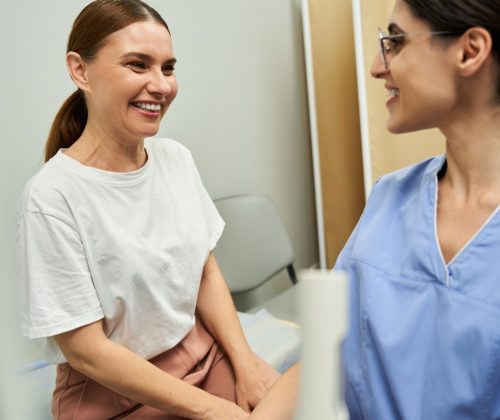Hysteroscopy
Dr Jenny Cook | Sydney Gynaecologist & Advanced Laparoscopic Surgeon
What is a Hysteroscopy?
A hysteroscopy uses a small camera to look inside the uterus. The cavity is gently filled with fluid (normal saline) so the lining can be clearly seen. This safe, minimally invasive procedure allows accurate diagnosis and effective treatment in just one step.
Recovery from hysteroscopy is usually very quick. Most women experience only minor cramps or light bleeding for up to 24 hours and are able to go home the same day. To allow for proper healing, you will be advised to avoid intercourse and swimming for five days following the procedure.

What It Can Treat?
Hysteroscopy can diagnose and treat conditions such as polyps, fibroids, adhesions, and uterine septum.
Polyps and Fibroids
Hysteroscopy can identify:
- Polyps – arising from the uterine lining (endometrium)
- Submucosal fibroids – firm lesions arising from the muscle layer but growing into the uterine cavity
Removal Using Myosure
I remove both polyps and fibroids under direct vision using the MyoSure device, which offers several benefits:
- Provides an excellent view of the uterine cavity
- Ensures the entire lesion, including the base, is removed
- Lower recurrence rates compared to traditional methods
- No energy source is required → minimal risk of scarring
- Normal saline is used (fewer complications than glycine)
Benefits of Removal
- Positive impact on fertility
- Relief from heavy or irregular bleeding
Asherman’s Syndrome
Adhesions can form in the uterus as a result of infection or after repeated curettes following miscarriages. These adhesions may be minor, known as synechiae, or more severe, where they completely block the uterine cavity — a condition called Asherman’s Syndrome.
Symptoms
- Lighter periods
- Difficulty conceiving
- Complete absence of periods
Diagnosis & Treatment
- Diagnosed with a Sonohysterogram
- Treated with hysteroscopy to divide adhesions using hysteroscopic scissors
- Post-operative care includes:
- High-dose oestrogen to promote new endometrial lining
- Antibiotics for one week to reduce infection risk
Uterine Septum
A uterine septum can be assessed at hysteroscopy.
A large septum may be linked to:
Recurrent pregnancy loss
Preterm labour
Malpresentation at term
Division of the Septum
A thin, well-formed septum can be divided using a pinpoint diathermy attachment on the resectoscope. During the procedure, the pressure of intrauterine fluid helps to open the cavity, making the division more precise and effective.
Careful Consideration
While dividing a septum may improve fertility outcomes, there is also a risk of intrauterine adhesion formation, which can negatively affect fertility. For this reason, each case must be carefully assessed before deciding whether to proceed with treatment.
Case Studies
Safe and effective diagnosis and treatment with hysteroscopy.
With advanced techniques, I can provide clear answers and targeted treatment in a single minimally invasive procedure. Whether it’s for fibroids, polyps, adhesions, or a uterine septum, hysteroscopy offers precise care tailored to your needs.








